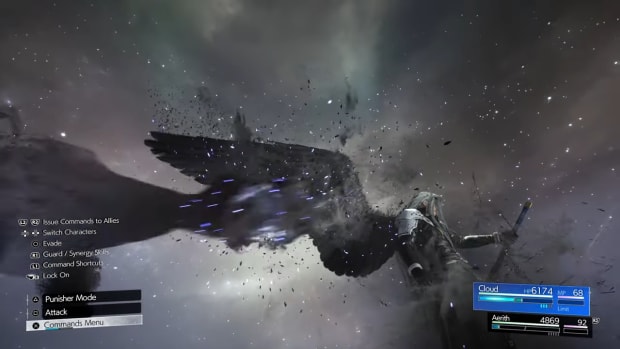Sonic Frontiers review - "One of the best 3D Sonic games, despite everything"
Sonic Frontiers has to be the least aesthetic Sonic game. Sega Genesis classics have thick sprite art and iconic sounds. Divisive Dreamcast entries in the series have a too-cool-for-school attitude complete with grinding mechanics and a soundtrack that introduced a generation of pre-teens to alt-rock. And the HD Boost-era games tried their best, at least. Meanwhile, Sonic Frontiers feels almost devoid of personality. The menus are clinical, and the environments you explore have a realistic look and feel that wouldn’t go out of place in Death Stranding. Clips of Sonic Frontiers in isolation look like an absurd fan-made Unreal Engine project pieced together with stock assets – but it’s only when your hands are on the controller that any of this starts to make sense.
Sonic Frontiers gives full control of Sonic to the player in a way that has never been possible before. Stringing together Sonic’s arsenal of abilities has always been one of the best parts of a 3D Sonic game, and now movement combos are a very deliberate choice – load screens even give you short combo challenges that see you linking together jumps, attacks, light-speed dashes, grinds, bounces, boosts, and more.
The world is littered with things to play with. A spring or a boost pad will almost always lead to a platforming challenge held high up in the air that will see Sonic bouncing between rails and foes, which will ultimately reward you with one of the game’s many collectibles. The collectibles don’t even feel like the goal – if Sonic Frontiers is doing things right, then you’ll spend most of your time ignoring the waypoint in the distance, or the aim to collect more things. You should be just exploring the world, platforming through, interacting with the things you find, and all of those essential collectibles will just come your way naturally. The only times Sonic Frontiers feels restrictive is when you aim to progress the story instead of exploring the world.
Though, there’s a way around this too. Each of the game’s islands has an area where you can chill and fish with Big the Cat. It’ll cost Purple Coins, and these are rare in the overworld, but meteor showers at night lead to a slot machine-style system that has the potential to reward you with hundreds of coins at a time. Use these coins to fish, and you’ll be rewarded with Fish Tokens, that can be traded in for literally anything you need to finish the game. Portal Gears, Skill Tokens, materials necessary for leveling up – everything is available from Big’s shop, meaning you can entirely skip any portion of the game that’s annoying you. It’s a bit of a strange addition, but it enhances the feeling of freedom that the game strives to evoke. Go anywhere, do anything – even skip entire sections if you feel like it, why not.
If you’re not skipping over things courtesy of Big the Cat, you’ll need to take down overworld bosses in order to earn Portal Gears. These Gears open portals that look like ruins in the overworld, and each of these houses a “classic” Sonic stage. The visual presentation is all off, but dedicated Sonic fans will recognize stages from a variety of 3D and 2D Sonic games. It’s a nice burst of nostalgia, and each stage comes with challenges to complete. Complete each challenge to master the stage, and earn Keys – you can get a total of seven from each stage.
The Keys enable you to unlock Chaos Emeralds, which you will then use at the end of an island’s story to transform into Super Sonic and defeat a giant robot in scenes that feel like an aspiring Bayonetta. Combat exists here – it’s not simply a game of hitting the weakpoint when it appears. It’s not very inspiring, though. Unlockable Skills increase your combat options, but once you’re able to spit out Sonic Booms like Street Fighter’s Guile in fast forward, it’s no longer a challenge, and combat often feels more like a roadblock than a fun part of the experience. Even though the spectacle of the Super Sonic stages is excellent, it doesn’t quite justify everything else.
Strangely enough, it’s the moments where you’re wandering the bland, semi-realistic wilderness where the game shines. It’s here where you feel free, able to go where you want, tackle what you want, in the order you want. See a big enemy in the distance? You might want to take it down. A big island floating in place? A bit of exploration can help you find a way up there. In these moments it’s genuinely great – or, at least, should be. It doesn’t matter what platform you play on, pop-in is unfortunately a major issue.
Rails and platforms are floating around the islands you explore, ominously hovering in place, waiting for Sonic to come along and start using them. Until Sonic gets close, they’re invisible – not rendered by the game. I entirely understand why the developers wouldn’t want everything rendered at once – not just for performance, but for the sake of whatever art design has actually gone into the landscape.
Being unable to see where rails originate from at a distance effectively ruins the whole point of seeing something on the horizon and running toward it. You will often be faced with seeing a location you need to reach, but having no idea of how it’s actually possible. Only by running around the edges of the landscape until platforms pop into view will you figure out what to do next. That’s ridiculous. This is a dagger to the heart of what this game is striving to be, and I personally found a few cheeky “shortcuts” in order to reach areas when I couldn’t locate the correct rail – only to find it once I made my way up there and everything popped into view.
But those cheeky shortcuts are part of what makes Sonic Frontiers as good as it is. In the options menu you’re given incredibly granular options to change Sonic’s handling to suit you. Max speed, acceleration, turning speed, grip – Sonic is like a vehicle you can tune and drive, but for the best experience, you should turn his speed up to the max from the beginning, and keep your max ring count low. While rings also count as your effective health, having maximum rings gives you a double speed boost – having access to this is far more valuable.
Using the boost mechanic on a max-speed Sonic feels like applying nitrous to a supercar in Need For Speed, and the game can barely handle it. Slip off a rock edge to launch off a weird angle, and Sonic’s momentum will carry him into the air. Deliberately shoot yourself from a weird point, and you can throw Sonic across the world, with his double jump and boost able to fine-tune your landing. This doesn’t actually seem intended at all, but abusing it makes Sonic Frontiers even better.
Despite the tacked-on combat, bland environments, and unnecessary RPG elements, Sonic Frontiers manages to be the best 3D Sonic game in recent memory. Damning praise, I know, but when you’re zipping from spring to spring, boost pad the boost pad, racking up skill points, and earning all of the items you need to get the next Chaos Emerald, Sonic Frontiers is a really engaging experience, and five minutes with it can easily turn into several hours.








